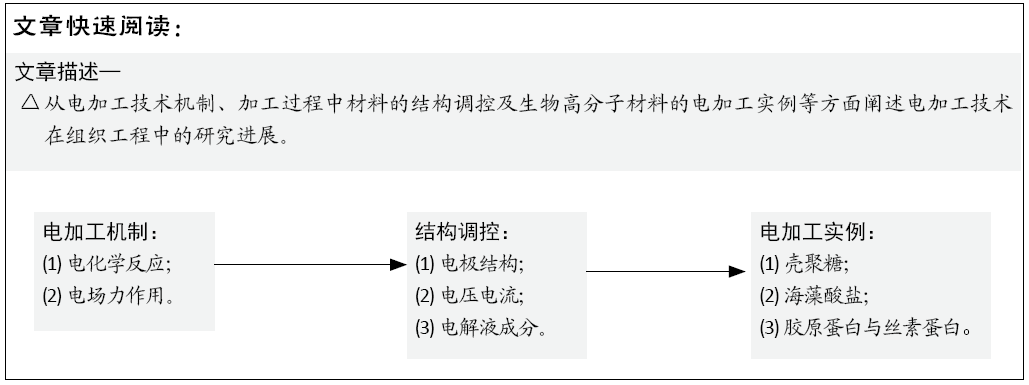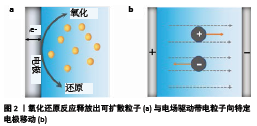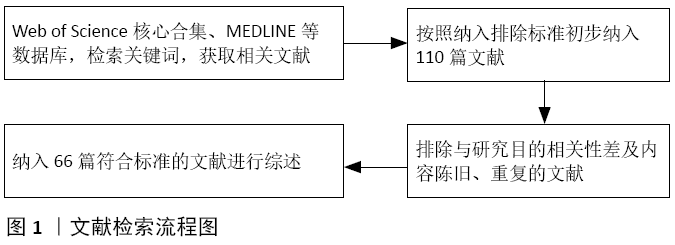[1] GROLL J, BOLAND T, BLUNK T, et al. Biofabrication:reappraising the definition of an evolving field.Biofabrication.2016;8(1):013001.
[2] MIRONOV V, TRUSK T, KASYANOV V, et al. Biofabrication:a 21st century manufacturing paradigm.Biofabrication.2009;1(2):022001.
[3] LI Y, XIAO Y, LIU C. The Horizon of Materiobiology:A Perspective on Material-Guided Cell Behaviors and Tissue Engineering.Chem Rev.2017;117(5): 4376-4421.
[4] ROGAN H, ILAGAN F, TONG XM, et al. Microribbon-hydrogel composite scaffold accelerates cartilage regeneration in vivo with enhanced mechanical properties using mixed stem cells and chondrocytes.Biomaterials. 2020;228: 10.
[5] CHANTRE CO, GONZALEZ GM, AHN S, et al. Porous Biomimetic Hyaluronic Acid and Extracellular Matrix Protein Nanofiber Scaffolds for Accelerated Cutaneous Tissue Repair.ACS Appl Mater Interfaces.2019;11(49): 45498-45510.
[6] TAMAYOL A, AKBARI M, ANNABI N, et al. Fiber-based tissue engineering: Progress, challenges,and opportunities.Biotechnol Adv.2013;31(5):669-687.
[7] CHEN Q, WU J, LIU Y, et al. Electrospun chitosan/PVA/bioglass Nanofibrous membrane with spatially designed structure for accelerating chronic wound healing.Mater Sci Eng,C.2019;105:110083.
[8] GALARRAGA JH, KWON MY, BURDICK JA. 3D bioprinting via an in situ crosslinking technique towards engineering cartilage tissue.Sci Rep.2019; 9(1):19987.
[9] FRIGUGLIETTI J, DAS S, LE P, et al. Novel Silicon Titanium Diboride Micropatterned Substrates for Cellular Patterning. Biomaterials.2020;244: 119927.
[10] SUN X, TYAGI P, AGATE S, et al. Highly tunable bioadhesion and optics of 3D printable PNIPAm/cellulose nanofibrils hydrogels.Carbohydr Polym. 2020; 234:115898.
[11] SHEN LB, GAO N, HUANG XR. Synthesis, characterization and electropolymerization of functionalized organic salt-anilinium saccharinate and electrochemically controlled release of saccharinate anions.Electrochim Acta. 2020;329:8.
[12] ODIJK M, VAN DEN BERG A. Nanoscale Electrochemical Sensing and Processing in Microreactors.Annu Rev Anal Chem.2018;11:421-440.
[13] FEIG VR, TRAN H, LEE M, et al. An Electrochemical Gelation Method for Patterning Conductive PEDOT:PSS Hydrogels.Adv Mater.2019;31(39): e1902869.
[14] QIU K, CHEN B, NIE W, et al. Electrophoretic Deposition of Dexamethasone-Loaded Mesoporous Silica Nanoparticles onto Poly(l-Lactic Acid)/Poly(ε-Caprolactone) Composite Scaffold for Bone Tissue Engineering.ACS Appl Mater Interfaces.2016;8(6):4137-4148.
[15] QU X, LIU H, ZHANG C, et al.E lectrofabrication of functional materials: Chloramine-based antimicrobial film for infectious wound treatment.Acta Biomater.2018;73:190-203.
[16] WANG X, YAN L, YE T, et al. Osteogenic and antiseptic nanocoating by in situ chitosan regulated electrochemical deposition for promoting osseointegration. Mater Sci Eng,C.2019;102:415-426.
[17] GARGAVA A, AHN S, BENTLEY WE, et al. Rapid Electroformation of Biopolymer Gels in Prescribed Shapes and Patterns:A Simpler Alternative to 3-D Printing.ACS Appl Mater Interfaces.2019;11(40):37103-37111.
[18] MAERTEN C, JIERRY L, SCHAAF P, et al. Review of Electrochemically Triggered Macromolecular Film Buildup Processes and Their Biomedical Applications.ACS Appl Mater Interfaces.2017;9(34):28117-28138.
[19] THOMAS MB, METOKI N, MANDLER D, et al. In Situ Potentiostatic Deposition of Calcium Phosphate with Gentamicin-Loaded Chitosan Nanoparticles on Titanium Alloy Surfaces.Electrochim Acta.2016;222:355-360.
[20] GEULI O, METOKI N, ELIAZ N, et al. Electrochemically Driven Hydroxyapatite Nanoparticles Coating of Medical Implants.Adv Funct Mater.2016;26(44): 8003-8010.
[21] HAN C, YAO Y, CHENG X, et al. Electrophoretic Deposition of Gentamicin-Loaded Silk Fibroin Coatings on 3D-Printed Porous Cobalt-Chromium-Molybdenum Bone Substitutes to Prevent Orthopedic Implant Infections.Biomacromolecules.2017;18(11):3776-3787.
[22] LI J, MANIAR D, QU X, et al. Coupling Self-Assembly Mechanisms to Fabricate Molecularly and Electrically Responsive Films.Biomacromolecules. 2019; 20(2):969-978.
[23] LI C, BAI H, SHI G. Conducting polymer nanomaterials:electrosynthesis and applications.Chem Soc Rev.2009;38(8):2397-2409.
[24] SADMAN K, WANG Q, CHEN SH, et al. pH-Controlled Electrochemical Deposition of Polyelectrolyte Complex Films.Langmuir.2017;33(8):1834-1844.
[25] MARTIN EJ, SADMAN K, SHULL KR. Anodic Electrodeposition of a Cationic Polyelectrolyte in the Presence of Multivalent Anions.Langmuir.2016;32(31): 7747-7756.
[26] CROSS ER. The electrochemical fabrication of hydrogels:a short review.SN Appl Sci.2020;2(3):397.
[27] REDEPENNING J, VENKATARAMAN G, CHEN J, et al. Electrochemical preparation of chitosan/hydroxyapatite composite coatings on titanium substrates.J Biomed Mater Res,Part A.2003;66A(2):411-416.
[28] WU LQ, GADRE AP, YI H, et al. Voltage-Dependent Assembly of the Polysaccharide Chitosan onto an Electrode Surface.Langmuir.2002;18(22): 8620-8625.
[29] YOKOYAMA F, FUJINO T, KIMURA K, et al. Formation of optically anisotropic alginic acid gels under dc electric fields.Eur Polym J.1998;34(2):229-234.
[30] CHEONG M, ZHITOMIRSKY I. Electrodeposition of alginic acid and composite films.Colloids Surf Physicochem Eng Aspects.2008;328(1):73-78.
[31] BRUCHET M, MELMAN A. Fabrication of patterned calcium cross-linked alginate hydrogel films and coatings through reductive cation exchange.Carbohydr Polym.2015;131:57-64.
[32] GENG Z, WANG X, GUO X, et al. Electrodeposition of chitosan based on coordination with metal ions in situ-generated by electrochemical oxidation.J Mater Chem B.2016;4(19):3331-3338.
[33] YAN K, DING F, BENTLEY WE, et al. Coding for hydrogel organization through signal guided self-assembly.Soft Matter.2014;10(3):465-469.
[34] LING T, LIN J, TU J, et al. Mineralized collagen coatings formed by electrochemical deposition.J Mater Sci Mater Med.2013;24(12):2709-2718.
[35] BESRA L, LIU M. A review on fundamentals and applications of electrophoretic deposition (EPD).Prog Mater Sci.2007;52(1):1-61.
[36] MARTIN LJ, AKHAVAN B, BILEK MMM. Electric fields control the orientation of peptides irreversibly immobilized on radical-functionalized surfaces.Nat Commun.2018;9(1):357.
[37] LEI M, QU X, LIU H, et al. Programmable Electrofabrication of Porous Janus Films with Tunable Janus Balance for Anisotropic Cell Guidance and Tissue Regeneration.Adv Funct Mater.2019;29(18):1900065.
[38] WU S, YAN K, ZHAO Y, et al. Electrical Writing onto a Dynamically Responsive Polysaccharide Medium:Patterning Structure and Function into a Reconfigurable Medium.Adv Funct Mater.2018;28(40):1803139.
[39] YI H, WU LQ, BENTLEY WE, et al. Biofabrication with Chitosan.Biomacromolecules. 2005;6(6):2881-2894.
[40] RAEBURN J, ALSTON B, KROEGER J, et al. Electrochemically-triggered spatially and temporally resolved multi-component gels.Mater Horiz.2014; 1(2):241-246.
[41] BRESSNER JE, MARELLI B, QIN G, et al. Rapid fabrication of silk films with controlled architectures via electrogelation.J Mater Chem B.2014;2(31): 4983-4987.
[42] YAN K, LIU Y, ZHANG J, et al. Electrical Programming of Soft Matter:Using Temporally Varying Electrical Inputs To Spatially Control Self Assembly.Biomacromolecules.2018;19(2):364-373.
[43] LIU Y, ZHANG B, GRAY KM, et al. Electrodeposition of a weak polyelectrolyte hydrogel:remarkable effects of salt on kinetics,structure and properties.Soft Matter.2013;9(9):2703-2710.
[44] TSAI C-C, MORROW BH, CHEN W, et al. Toward Understanding the Environmental Control of Hydrogel Film Properties:How Salt Modulates the Flexibility of Chitosan Chains.Macromolecules.2017;50(15):5946-5952.
[45] SIMCHI A, PISHBIN F, BOCCACCINI AR. Electrophoretic deposition of chitosan. Mater Lett.2009;63(26):2253-2256.
[46] CHENG Y, LUO X, BETZ J, et al. In situ quantitative visualization and characterization of chitosan electrodeposition with paired sidewall electrodes. Soft Matter.2010;6(14):3177-3183.
[47] NING C, JIAJIA J, MENG L, et al. Electrophoretic deposition of GHK-Cu loaded MSN-chitosan coatings with pH-responsive release of copper and its bioactivity.Mater Sci Eng C.2019;104:109746.
[48] GITERU SG, OEY I, ALI MA. Feasibility of using pulsed electric fields to modify biomacromolecules:A review.Trends Food Sci Technol.2018;72:91-113.
[49] GRAY KM, LIBA BD, WANG Y, et al. Electrodeposition of a Biopolymeric Hydrogel: Potential for One-Step Protein Electroaddressing.Biomacromolecules. 2012;13(4):1181-1189.
[50] LEE KY, MOONEY DJ. Alginate:Properties and biomedical applications.Prog Polym Sci.2012;37(1):106-126.
[51] JIN Z, GüVEN G, BOCHAROVA V, et al. Electrochemically Controlled Drug-Mimicking Protein Release from Iron-Alginate Thin-Films Associated with an Electrode.ACS Appl Mater Interfaces.2012;4(1):466-475.
[52] CHENG Y, LUO X, BETZ J, et al. Mechanism of anodic electrodeposition of calcium alginate.Soft Matter.2011;7(12):5677-5684.
[53] TAIRA N, INO K, ROBERT J, et al. Electrochemical printing of calcium alginate/gelatin hydrogel.Electrochim Acta.2018;281:429-436.
[54] BAKER HR, MERSCHROD S EF, PODUSKA KM. Electrochemically Controlled Growth and Positioning of Suspended Collagen Membranes.Langmuir. 2008; 24(7):2970-2972.
[55] DEWLE A, PATHAK N, RAKSHASMARE P, et al. Multifarious Fabrication Approaches of Producing Aligned Collagen Scaffolds for Tissue Engineering Applications.ACS Biomater Sci Eng.2020;6(2):779-797.
[56] BARRETT DJ, LINLEY MD, BEST SM, et al. Fabrication of free standing collagen membranes by pulsed-electrophoretic deposition.Biofabrication. 2019;11(4):045017.
[57] CHENG X, GURKAN UA, DEHEN CJ, et al. An electrochemical fabrication process for the assembly of anisotropically oriented collagen bundles.Biomaterials.2008;29(22):3278-3288.
[58] UQUILLAS JA, KISHORE V, AKKUS O. Effects of phosphate-buffered saline concentration and incubation time on the mechanical and structural properties of electrochemically aligned collagen threads. Biomed Mater. 2011;6(3):035008.
[59] ZHANG Q, HAN G, LU C, et al. Facile Preparation of Mechanical Reinforced and Biocompatible Silk Gels.Fibers Polym.2019;20(4):675-682.
[60] LU Q, HUANG Y, LI M, et al. Silk fibroin electrogelation mechanisms.Acta Biomater.2011;7(6):2394-2400.
[61] LEISK GG, LO TJ, YUCEL T, et al. Electrogelation for Protein Adhesives.Adv Mater.2010;22(6):711-715.
[62] GUO YQ, GUAN J, PENG H, et al. Tightly adhered silk fibroin coatings on Ti6Al4V biometals for improved wettability and compatible mechanical properties.Mater Des.2019;175:9.
[63] SERVOLI E, MANIGLIO D, MOTTA A, et al. Folding and Assembly of Fibroin Driven by an AC Electric Field:Effects on Film Properties.Macromol Biosci. 2008;8(9):827-835.
[64] LIN Y, XIA X, SHANG K, et al. Tuning Chemical and Physical Cross-Links in Silk Electrogels for Morphological Analysis and Mechanical Reinforcement.Biomacromolecules.2013;14(8):2629-2635.
[65] SAHA S, PRAMANIK K, BISWAS A. Silk fibroin coated TiO2 nanotubes for improved osteogenic property of Ti6Al4V bone implants.Mater Sci Eng, C. 2019;105:14.
[66] KARAHALILOĞLU Z. Curcumin-loaded silk fibroin e-gel scaffolds for wound healing applications.Mater Technol.2018;33(4):276-287.
|



